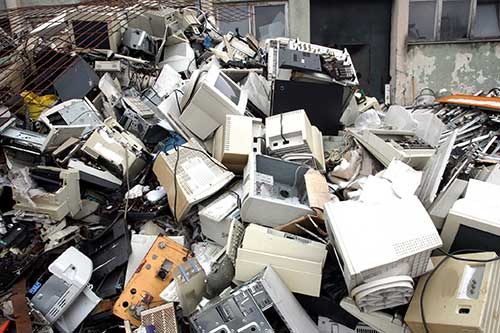Mercury Contamination Remediation Under California DTSC Regulations
Inspection by the California Department of Toxic Substances Control (DTSC) discovered hazardous levels of mercury in a section of an electronics waste recycling plant. Management was ordered to shut down that part of the operation and develop a plan to address the situation.
FACS was called in to advise the recycler and develop clearance criteria. The FACS team inspected the facility, developed the necessary plan, and oversaw the cleanup. The FACS team leader then presented the findings and supporting data to the client’s legal representative and to officials from DTSC.
DTSC deemed the work satisfactorily completed, opening the door for the client to work with the equipment manufacturer to get the plant back into full operation.
Key Results
FACS walked the client through the regulatory concerns and acted as a liaison to make sure the DTSC officials were satisfied with the plan and results.
Drawing on a similar situation encountered during the 2001 disaster at the World Trade Center, the FACS team leader was able to produce the initial clearance criteria within a week.
FACS set up a daily monitoring protocol both inside and outside the contaminated area to protect remediation workers and employees – enabling recycling activity in other parts of the plant to continue.

About the Client
This case concerns a California-based recycler of electronic devices. E-waste is a serious environmental threat. Most of the more than 40-million tons of electronics gear discarded in the U.S. each year is incinerated or dumped into landfills. Only about 12.5 percent (2016 EPA estimate) is recycled.
FACS worked closely with the client’s environmental health and safety manager to protect workers and get the plant back online as soon as possible.

The Problem
E-waste recycling sometimes requires the use of bulky pieces of equipment. In this case, mercury-contaminated dust from several of those machines had penetrated the walls, floors, and ceilings in a section of the recycling plant. Following inspection by the California Department of Toxic Substances Control, that part of the operation was ordered to cease operation.
The DTSC directed the company to develop a plan to remove hazardous heavy metal contamination from the area and develop a plan to make sure it wouldn’t happen again. The DTSC requested that a health and safety plan for the site be developed ASAP.
Management called FACS for help.

The FACS Solution
The FACS team drafted the required plan within a week. The team leader drew on experience at the World Trade Center disaster to quickly prepare clearance criteria for air and surface contamination.
FACS helped the client choose a contractor for the remediation work, then monitored the site daily to make sure the work was proceeding safely. FACS helped design a means of containment that would prevent escapement and allow work to continue in other areas of the plant.
During remediation work, FACS monitored workers to make sure exposure levels were within the pre-set limits. FACS recorded baseline exposure levels and monitored workers as the work progressed. It was necessary to upgrade respiratory protection at certain points during the remediation.
FACS surface samples of equipment, sheetrock walls, floors, and ceilings after the contractor finished showed that more work was needed. FACS called the contractor back to make sure the clearance criteria was met, then performed air samples to document the successful completion of remediation activity. FACS then met with the client’s lawyer and DTSC officials to present findings and data.
The client’s environmental health and safety manager was given everything he needed to address the problem. FACS kept him informed every step of the way during this intense, cover-all-the-bases project.